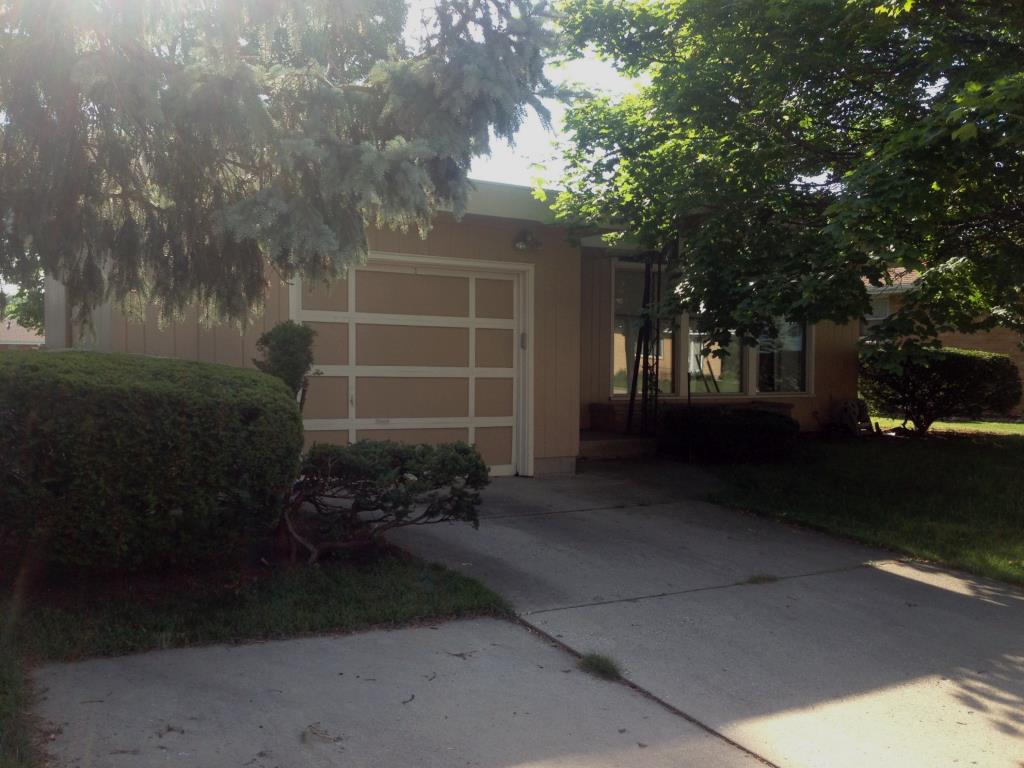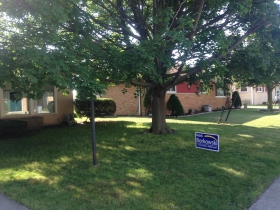Mark Borkowski’s Quaint Ranch Home
County supervisor lives in suburban-style area at edge of Greenfield but wants to be alderman.
Mark Borkowski represents constituents of the southwest side of Milwaukee and the City of Greenfield as the County Supervisor for the 11th District. The city, such as it is in his neck of the woods, has a decidedly suburban feel, and Borkowski’s ranch house on S. Sunset Drive is no exception. Borkowski will have to say goodbye to his Greenfield constituents if he is successful in his August 18th race for 11th District Alderman, where he and former House Confidential honoree Sen. Tim Carpenter are facing off to replace the late Joe Dudzik.
Borkowski has lived for over 20 years on S. Sunset Drive, which is in the City of Milwaukee, but doesn’t really look it. His is a long, sinuous street, wedged into the Wedgewood Park Subdivision. There are no sidewalks along the street here in Wedgewood. Instead, footpaths wind through the back yards and along the sides of the houses. For the most part, living rooms face the footpaths, while kitchens look out onto the street. There are no alleys, and every home has its own stubby little driveway here in what the developer Warren B. O’Connor called in the 1950’s “Milwaukee’s Most Beautiful Subdivision.”
The development was considered a marvel at the time, and was praised for its pedestrian-friendly design. Hardly any planner would consider this to be a walker’s paradise today. (It has a Walkscore of 52, “Somewhat Walkable”.)
But it was considered all the rage in 1955 when it was platted along the precepts of the “Radburn Theory,” devised in 1929 by Clarence Stein and Henry Wright, and named after Radburn, N. J., which they designed as a “Town for the Motor Age.”
The Motor Age demanded separation of transportation by mode, so that pedestrians and traffic would rarely intersect, hence the interior sidewalks. Radburn also featured “superblocks” like Sunset Drive, which goes on for a good 1,000 feet without a break. Radburn, like Wedgewood, also incorporated culs-de-sac, and separated buildings by type. At least in Radbury, there is a business district, which Wedgewood lacks.
Today, practically everything about Wedgewood Park is anathema to urban planners, and offers little appeal for pedestrians who are not neighbors. By the standards of the suburban virus it helped to spread, however, Wedgewood Park seems cozy — almost crowded, with 1,123-square-foot houses like Borkowski’s sited on lots of about 6,000 square feet, barely the footprint of a McMansion. Still, this is much larger than the 25 foot wide or smaller lot found in the pre-automobile portions of the city from which the original settlers largely came.
In the early 1950’s, when this area was platted, the City of Milwaukee was 67.5 square miles in area, and Mayor Frank Zeidler was in an acquisitive mode. The Towns of Lake, Granville, Wauwatosa and Greenfield were vulnerable to annexation by the neighboring city. Over the course of the next few years, through hundreds of individual annexations, sometimes of no more than a couple of lots, the city of Milwaukee grew to encompass 91.5 square miles by 1961, and Granville and Lake completely disappeared. Today, the city is presumably maxed out at 96.8 square miles, with no adjacent towns to raid at will. That which remained of Greenfield incorporated in 1957, effectively ending the neighboring city’s encroachment. Mequon, a town of over 46 square miles also incorporated that year as a preemptive measure.
Wedgewood was comprised of a “variety of fine and distinctive homes such as you find in Fox Point, Whitefish Bay, Shorewood, Wauwatosa and other finer sections,” as its promotional materials claimed. If you believe that, I’ve got a bridge to sell you.
Borkowski’s house was built in 1956 by a fellow named Sid Dwyer, who was the owner contractor. He sold it in July that year to J. J. Lux for $18,700. In 1964 D. Kuban paid $21,000 for the place, selling it in 1970 to G. Kakoci for $24,000.
The home has a 298-square-foot garage, or something about the size of a River Hills mud room. The home has a full and a half-bath, along with three bedrooms and a cathedral ceiling in the living room. It has warm air heating, powered by a 75,000 BTU Lennox G20Q3E-75, and is cooled by a Lennox HS25-261, two-ton air conditioner.
In 1969 Mrs. H. P. Lunz lived across the street from what is now the Borkowski residence, and told a reporter her feelings about the neighborhood.
“We like it very much. We like the big lots. We like the idea of no alleys and no curbs. We like the living room facing the inner yard.”
About Mark Borkowski
Mark Borkowski was elected 11th District Supervisor in 1992 and re-elected five times. He once had a reputation as a moderate on the county board, but as its members have moved left, he has been left in a minority of non-liberals and now is among the board’s small contingent of conservatives. He made a big deal of being opposed to the Milwaukee streetcar, an issue that has nothing to do with Milwaukee County, but will definitely help him in his run for alderman in the 11th District, perhaps the only aldermanic district opposed to the streetcar.
Borkowski is personable, modest and works to represent constituents, which may help explain why there was no attempt to recall him from office, though he voted for the infamous 2000-2001 county pension plan that led to the recall of seven board members. He is always responsive to reporters and generally very quotable.
Borkowski, if he is elected alderman, will be a double dipper, earning his county pension while also getting paid a full-time salary as alderman, and earning credits for a future city pension. Borkowski will have worked 24 years as county supervisor, earning two percent of his final average salary (of $50,679) for each year worked, meaning his annual county pension will be in excess of $24,000. Had he continued to serve as supervisor after 2016, when the position becomes a part-time one, his final average salary would have dropped to $24,051, and his pension would have been cut in half.
Borkowski instead will preserve his higher pension and perhaps add the annual salary for alderman of $73,222.
(Carpenter, by the way, would also be a double dipper, probably with a state pension in the neighborhood of $25,000. He too would then collect the higher city salary and add years of credit toward a city pension.)
Borkowski graduated from Carroll College in 1981 with a Bachelor of Science degree in Business Administration. He served as Vice Chair of the Judiciary, Safety and General Services Committee and a member of the Transportation, Public Works and Transit Committee, and the Health and Human Needs Committee.
Supervisor Borkowski is a member of the War Memorial Board of Trustees, and the Greenfield Chamber of Commerce and the Basilica of St. Josaphat Foundation and former Executive Director of the Mitchell Street Advancement Corp. and a former National Director for the Polish National Alliance. He was formerly married and has two adult children.
Photo Gallery
The Rundown
- Owner: Mark Borkowski
- Location: City of Milwaukee
- Neighborhood: Wedgewood
- Subdivision: Re-Subdivision of Wedgewood Park
- Year Built: 1956
- Style: 1956 Ranch Home.
- Size: 1,123 square feet
- Fireplaces: No.
- Rec Room: Yes, down in the full basement.
- Assessment: Land: $43,900 [Lot size 6,048s.f. = $7.25/s.f.]. Improvements: $76,600. Total: $120,500
- Taxes: $3,395.24. Paid in Full.
- Walk Score: 52 out of 100. “Somewhat Walkable.”
- Transit Score: 40 out of 100. “Some Transit”.
How Milwaukee Is It? The residence is nine miles from Milwaukee City Hall.
House Confidential Database
| Name | City | Assessment | Walk Score | Year |
|---|---|---|---|---|
| Name | City | Assessment | Walk Score | Year |























HA! “…offers little appeal for pedestrians who are not neighbors.” Something tells me that is exactly how the residents of this neighborhood like it.